Radon Publications, Webinars, and Videos
On this page:
- General Radon Information
- Webinars and Videos
- Radon Causes Lung Cancer
- Testing and Fixing Schools
- Contractor Reports
- Additional Resources
General Radon Information
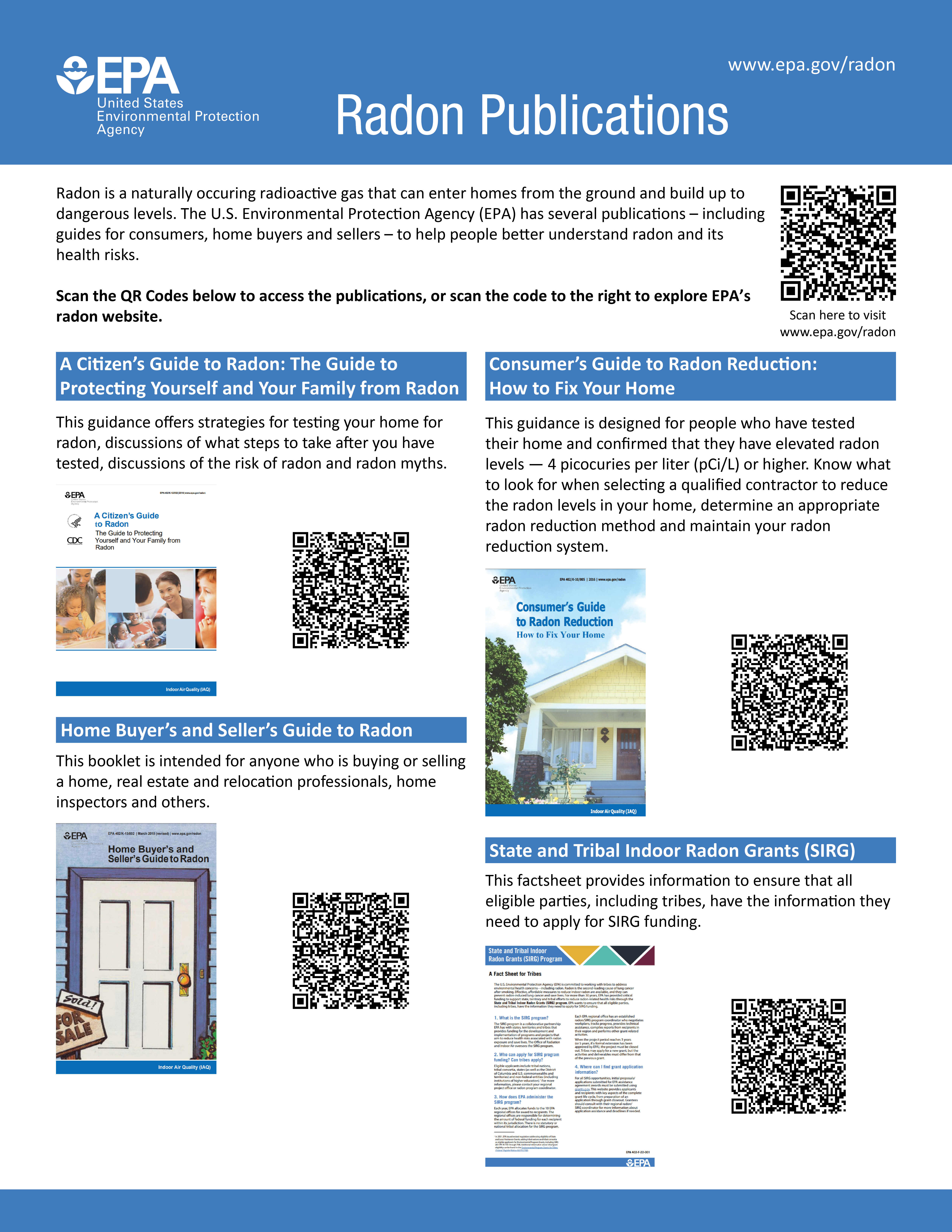
Radon Publications One-Pager (pdf)
This one-pager has QR codes to several radon publications – including guides for consumers, home buyers and sellers – to help people better understand radon and its health risks. Professionals in the real estate industry or public health can easily share these publications digitally. Clients can simply scan the QR codes to access the publications.
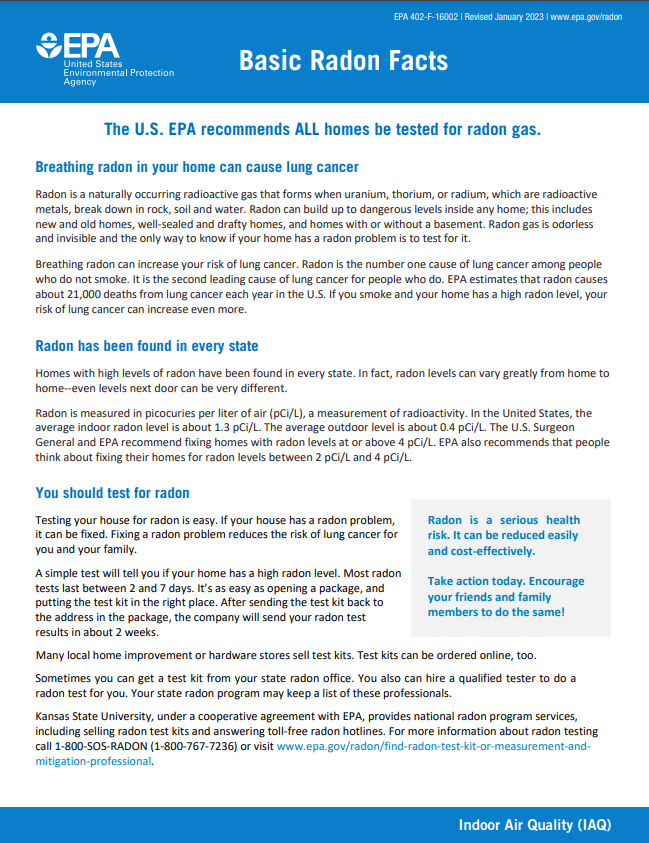
Featured Publication: Download this revised fact sheet!
There is no known safe level of exposure to radon. EPA strongly recommends that you fix your home if your test shows 4 picocuries per litre (pCi/L) (150 becquerels per meter cubed (Bq/m3)) or more. If your test shows between 2 and 4 pCi/L (75 - 150 Bq/m3), consider fixing.
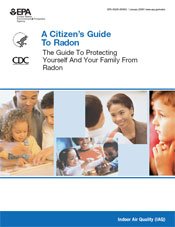
A Citizen's Guide to Radon: The Guide to Protecting Yourself and Your Family from Radon (EPA 402/K-12/002, December 2016)
This guidance offers strategies for testing your home for radon and discussions of what steps to take after you have tested, discussions of the risk of radon and radon myths. (Note: The current version reflects corrections to links and contact information.)
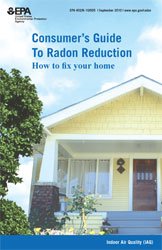
Consumer's Guide to Radon Reduction: How to Fix Your Home (EPA 402/K-10/005, December 2016)
You have tested your home for radon, but now what? This guidance has been specifically designed for people who have tested their home for radon and confirmed that they have elevated radon levels — 4 picocuries per liter (pCi/L) (150 becquerels per meter cubed (Bq/m3)) or higher. Know what to look for when selecting a qualified contractor to reduce the radon levels in your home, determine an appropriate radon reduction method and maintain your radon reduction system.
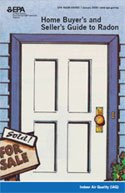
Home Buyer’s and Seller’s Guide to Radon (pdf)
(EPA 402/K-24/001, March 2024)
This booklet is intended for anyone who is buying or selling a home, real estate and relocation professionals, home inspectors and others.

Learning About Radon A Part Of Nature (EPA 402/K02/002)
Written for Native Americans, this 18-page booklet discusses radon's place in the world, the basics on testing, and how homes can be fixed to reduce radon levels. Native Americans should contact their Tribal health department or state radon program office for more information.
See also EPA's Indoor Air Quality Tribal website.
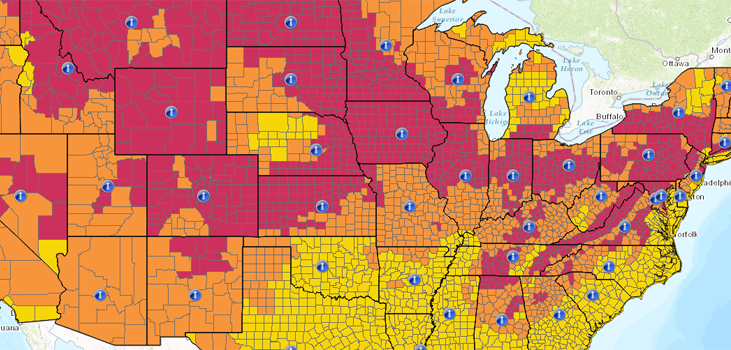
The EPA Map of Radon Zones (June 2019, EPA 402/F19/004)
The purpose of this map is to assist National, State and local organizations to target their resources and to implement radon-resistant building codes. This map is not intended to be used to determine if a home in a given zone should be tested for radon. Homes with elevated levels of radon have been found in all three zones. All homes should be tested regardless of geographic location.
Read more about the Radon Zone and Supplemental Radon Information.

Local Efforts to Reduce Exposure to Radon (EPA 402/K-14/002)
Every day in the United States someone is exposed to radon gas in their home. The EPA and its partners are working to inform and educate citizens of the dangers associated with exposure to radon gas. Read about some outstanding examples and lessons learned of the successes achieved.
Webinars and Videos
- Webinar: An Introduction to Radon Gas in Homes
- Radon and Your Health Spanish Webinar
- National Radon Action Month, check out our PSA (Spanish Video)
- Radon Protection in New Homes
Radon Causes Lung Cancer: the Scientific Proof

Technical Support Document for the 1992 Citizen's Guide to Radon
This document presents the wide range of technical analyses, radon risk communication research, legislative directives and other information that the U.S. EPA used to shape the policies that are set forth in the 1992 "A Citizen's Guide to Radon." The document summarizes extensive technical analyses of the data that have been gathered over the past years.
A Guide for Health Care Providers - Reducing the Risk From Radon: Information and Interventions
The Conference of Radiation Control Program Directors, Inc., has developed a new guide for health care providers designed to furnish health care providers with the information they need to reduce their patients' exposures to radon.
2003 Report: EPA's Assessment of Risks from Radon in Homes (June 2003, 402-R-03-003)
The EPA updated the Agency’s estimates of lung cancer risks from indoor radon based on the National Academy of Sciences’ (NAS) latest report on radon, the Biological Effects of Ionizing Radiation (BEIR) VI Report (1999). This report is the most comprehensive review of scientific data gathered on radon and builds on and updates the findings of the previous NAS BEIR IV Report (1988). NAS concluded that the findings of BEIR VI showed that if homeowners haven’t yet tested their homes for radon and fixed them if the levels are elevated, they should do so.
National Cancer Institute's 2010 Surveillance, Epidemiology, and End Results (SEER) estimated US mortality numbers (1 pp, 15 K).
Testing and Fixing Schools
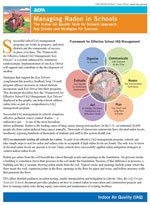
Managing Radon in Schools, (PDF) June 2010
As part of an effective IAQ management program, schools should test for radon to know if radon levels are elevated — and if so, reduce risks to occupants through radon mitigation. Many schools have successfully applied radon mitigation strategies to control indoor radon levels.

Radon Prevention in the Design and Construction of Schools and Other Large Buildings (TXT) (EPA 625-R-92-016, June 1994)
It is typically easier and much less expensive to design and construct a new building with radon-resistant and/or easy-to-mitigate features, than to add these features after the building is completed and occupied.
- See also - IAQ Tools for Schools Program
- See also - IAQ Design Tools for Schools
EPA no longer updates the follow information, but it may be useful as a reference or resource.

Reducing Radon in Schools: A Team Approach(TXT) (EPA 402-R-94-008, April 1994)
This document will assist you in determining the best way to reduce elevated radon levels found in a school. It is designed to guide you through the process of confirming a radon problem, selecting the best mitigation strategy, and directing the efforts of a multidisciplinary team assembled to address elevated radon levels in a way that will contribute to the improvement of the overall indoor air quality of the school.
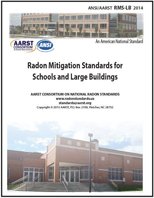
Radon Mitigation Standards for Schools and Large Buildings (RMS-LB 2014) from The American National Standards Institute (ANSI) and American Association of Radon Scientists and Technologists (AARST)
This American National Standard addresses the complexities of properly mitigating radon in large and complicated building structures that require specialized techniques and quality assurance to address complicated building designs and specialized airflow.
View RMS-LB 2014at AARST Radon Standards webpage.
Contractor Reports

Contractor Report: Radon Device Performance Check (July 2014, EPA 402/R-14/013)
This report provides a review of radon measurement proficiency data the EPA used to help determine the current proficiency of radon test devices. This report, and its release, is one thing the radon technical community is doing to help assure the public that radon test devices can be used to make mitigation decisions. Also, this report helps the EPA respond to the Office of the Inspector General's report (Rpt. No. 09-P-0151), regarding oversight of radon testing device accuracy and reliability. Author: Richard Krop, Ph.D., Angana Roy, MPH.
Contractor Report: Exploratory Study of Basement Moisture During Operation of ASD Radon Control Systems - Revised March 2008 (EPA 402/R-07/017)
EPA's Indoor Environments Division commissioned an Exploratory Study of Basement Moisture During Operation of ASD Radon Control Systems, under a cooperative agreement with Auburn University, Auburn, Alabama. The principal investigator was Brad Turk of Environmental Building Sciences, Inc., Las Vegas, New Mexico.
The purpose of the study was to better understand the potential moisture reduction benefits from the operation of residential radon control systems. The report contains information of interest to a wide variety of audiences. Therefore, the EPA is making this contractor's reports publicly available. Because these are contractor's reports, their findings, conclusions and recommendations are those of its authors, not necessarily those of the EPA. The Agency believes that this information may be useful to industry associations, standard-setting organizations, government agencies and consumers.
- Read the Movement and Sources of Basement Ventilation Air and Moisture During Active Soil Depressurization Radon Control Additional Analysis (May 2009, EPA 402/R-09/020) | Appendix A (Correlation Matrices), B (Regression Results) and C (Moisture and Flow Data During Interzonal Flow Test Periods) May 20, 2009 | This report is only available on-line
